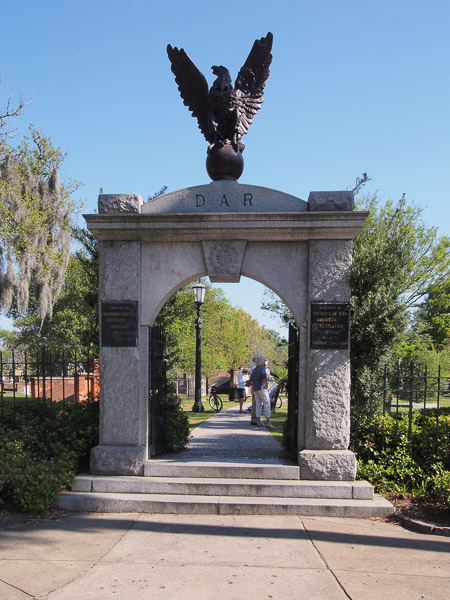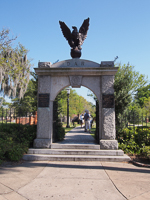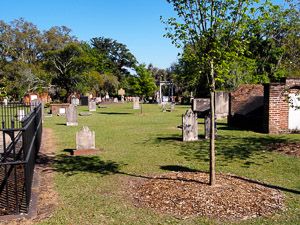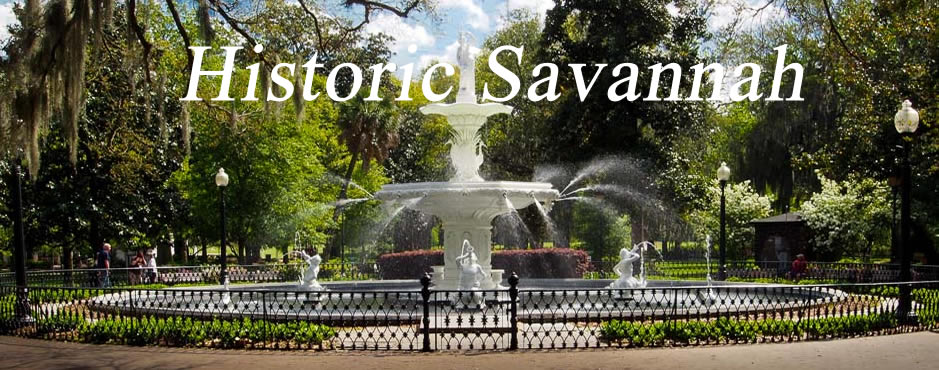
Colonial Park Cemetery
Colonial Park Cemetery
 Colonial Park Cemetery
Colonial Park Cemetery
Colonial Park Cemetery
Savannah, GA 31401
Hours:
November - March 8:00a - 5:00p
March - November 8:00a - 8:00p
Colonial Park Cemetery is located in the heart of Savannah's Historic District and served as Savannah’s primary public cemetery from 1750 to 1853. It was established in 1750 and by 1789 had expanded by 300 percent to the current size of six acres. Among those buried here are Button Gwinnett, a signer of the Declaration of Independence. This cemetery is a popular stop for local ghost tours, including one walking tour that goes right through the cemetery at night.
More than 700 victims of the 1820 Yellow Fever epidemic are buried in Colonial Park Cemetery. There are also many victims of Savannah's tragic dueling era.
The cemetery was already closed to burials before the start of the Civil War and no Confederate soldiers are buried there. But the war did leave its mark on the cemetery. Federal troops took over the cemetery grounds during their occupation of Savannah and many of the graves were looted and desecrated. It has been said that Union soldiers changed the dates on many of the headstones.

Colonial Park Cemetery The Colonial Park Cemetery is also home to one of Savannah's most famous ghosts, that of "Rene Asche Rondolier (or Renee Rondolia Asch), a disfigured orphan who was said to have called Colonial Park his home in the early 1800s. Accused of murdering two girls whose bodies were found in the cemetery, Rene was dragged to the nearby swamps and lynched and left for dead. More dead bodies turned up in the cemetery in the days that followed. The townspeople were convinced it was Rene's ghost and some still call the cemetery, Rene's playground.
The park-like cemetery is the oldest intact municipal cemetery in Savannah. It has been closed to interments since 1853. The cemetery became a city park in 1896.


